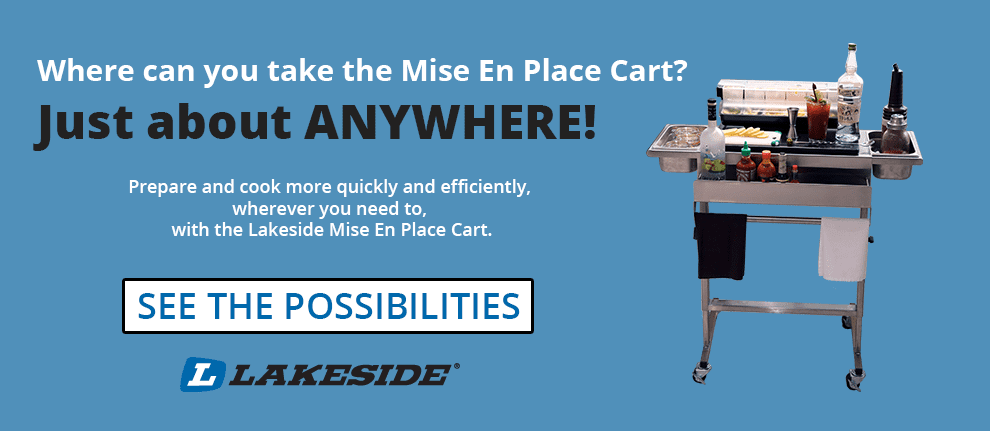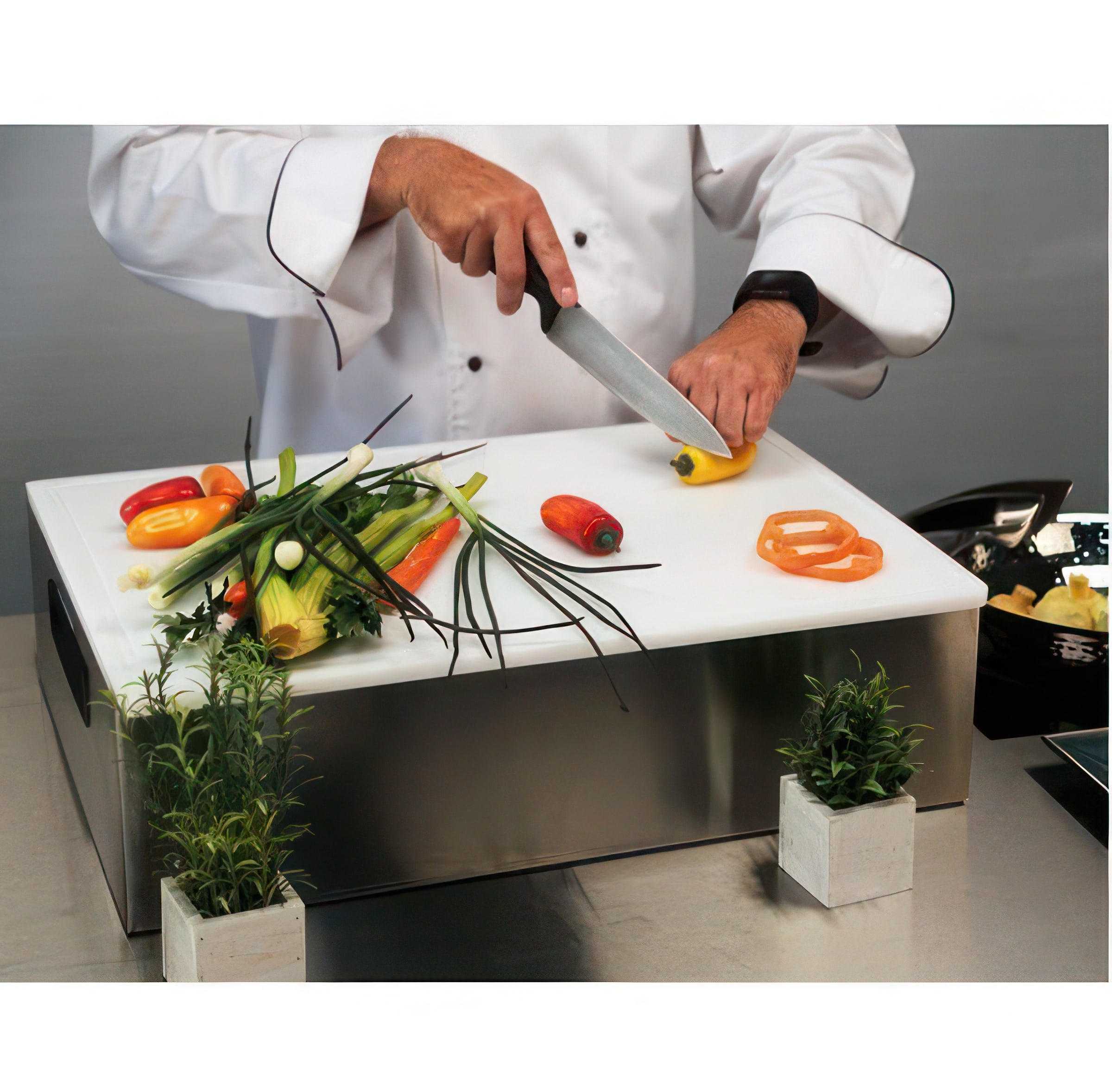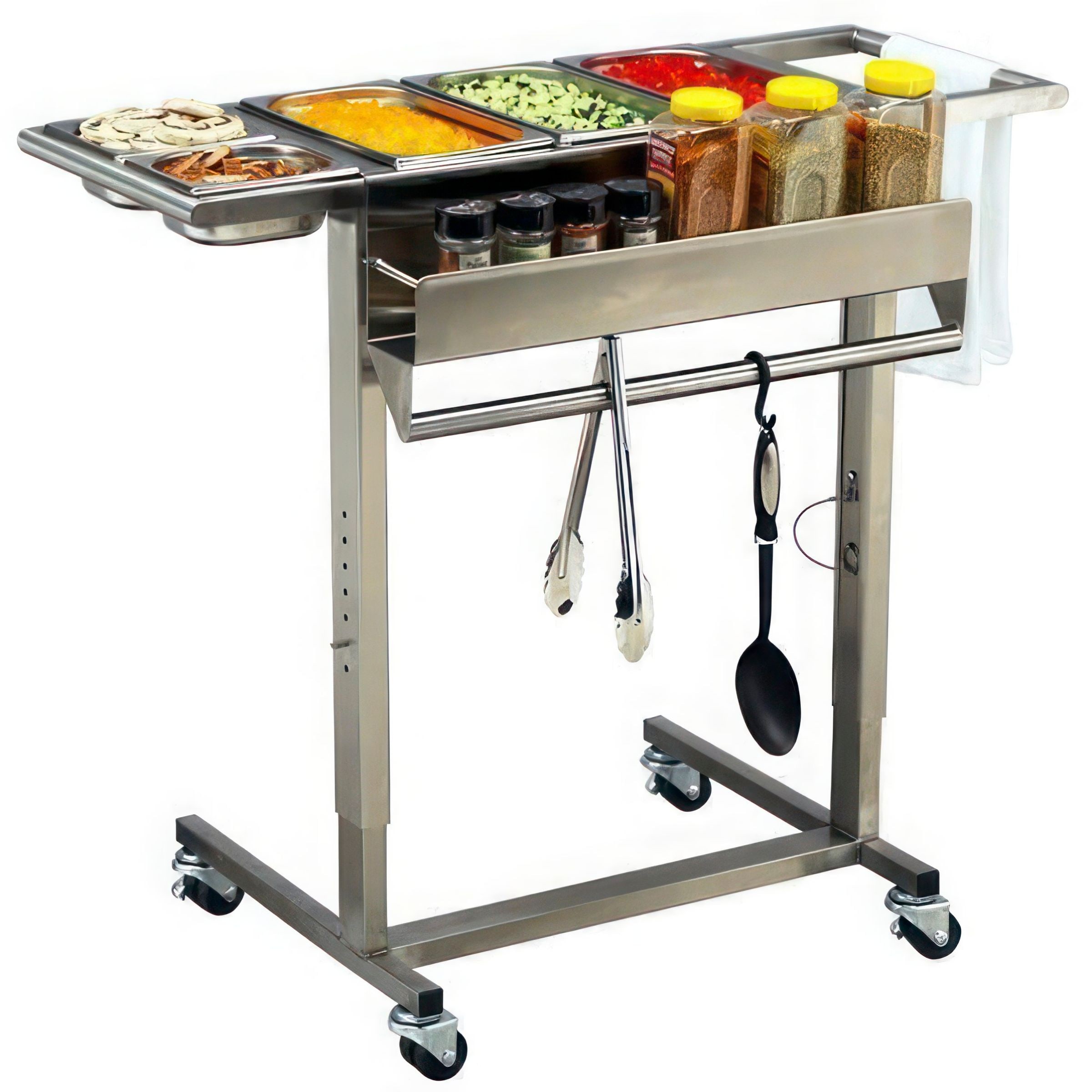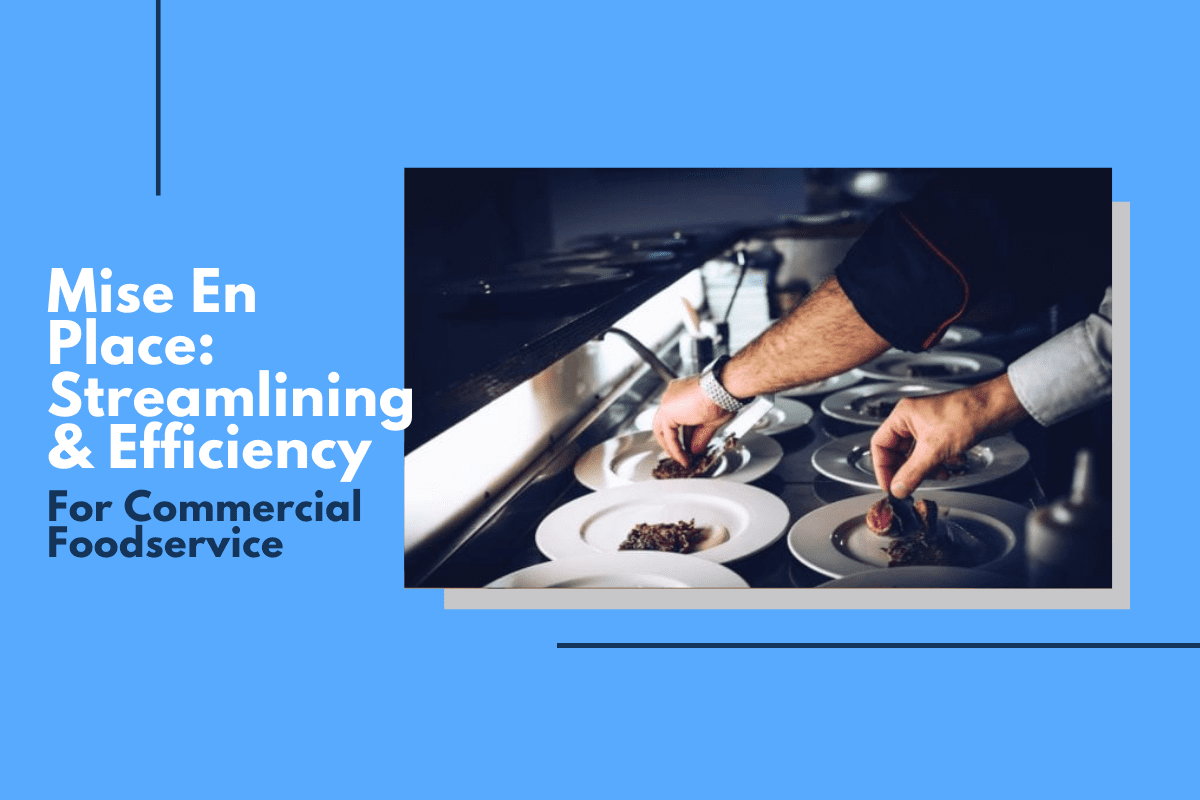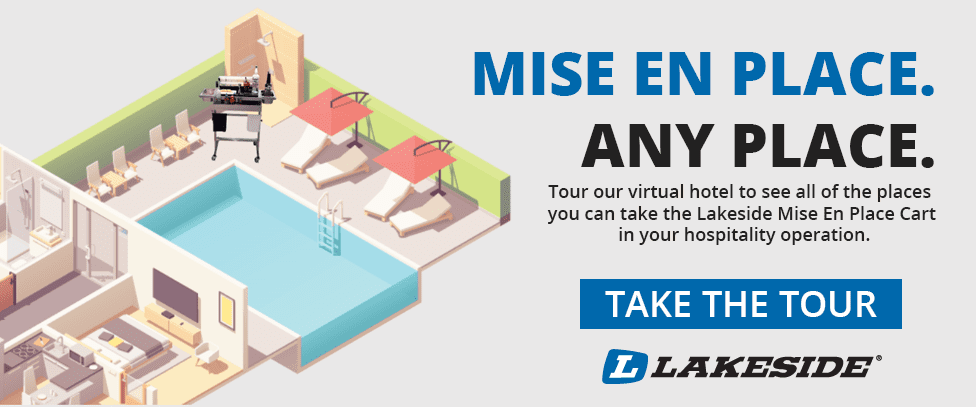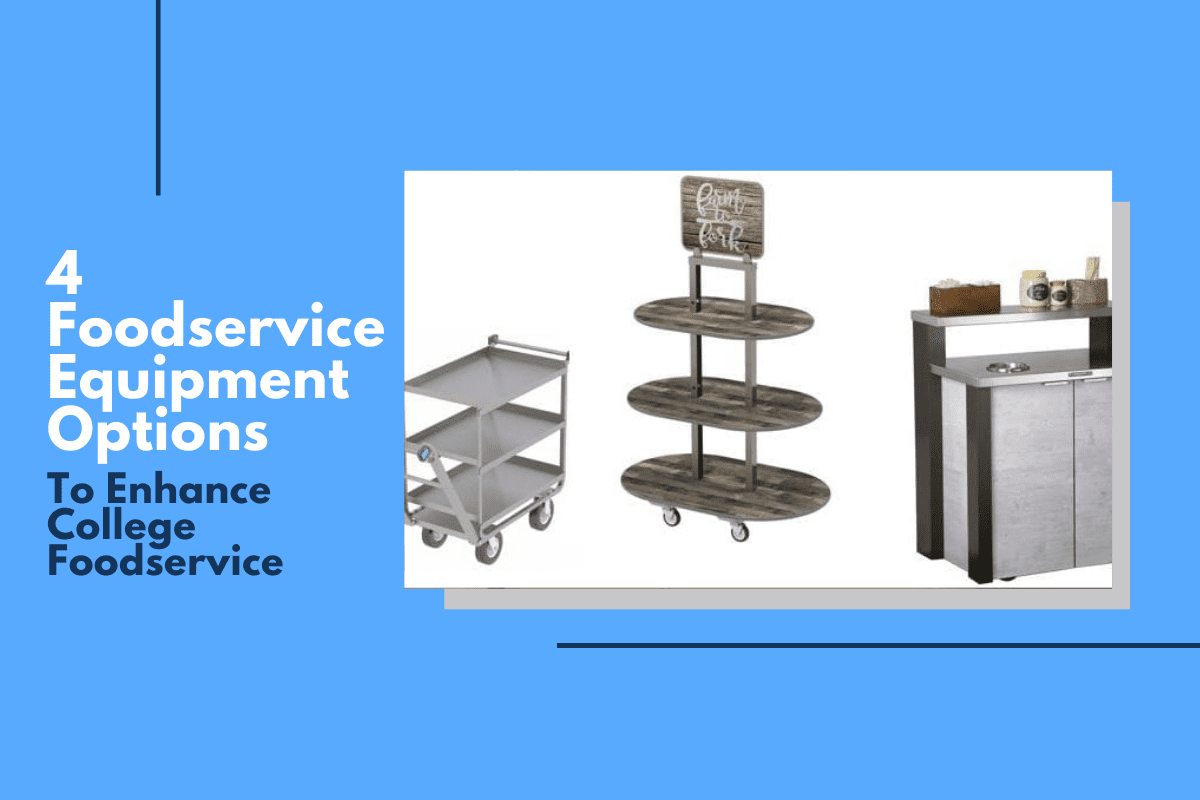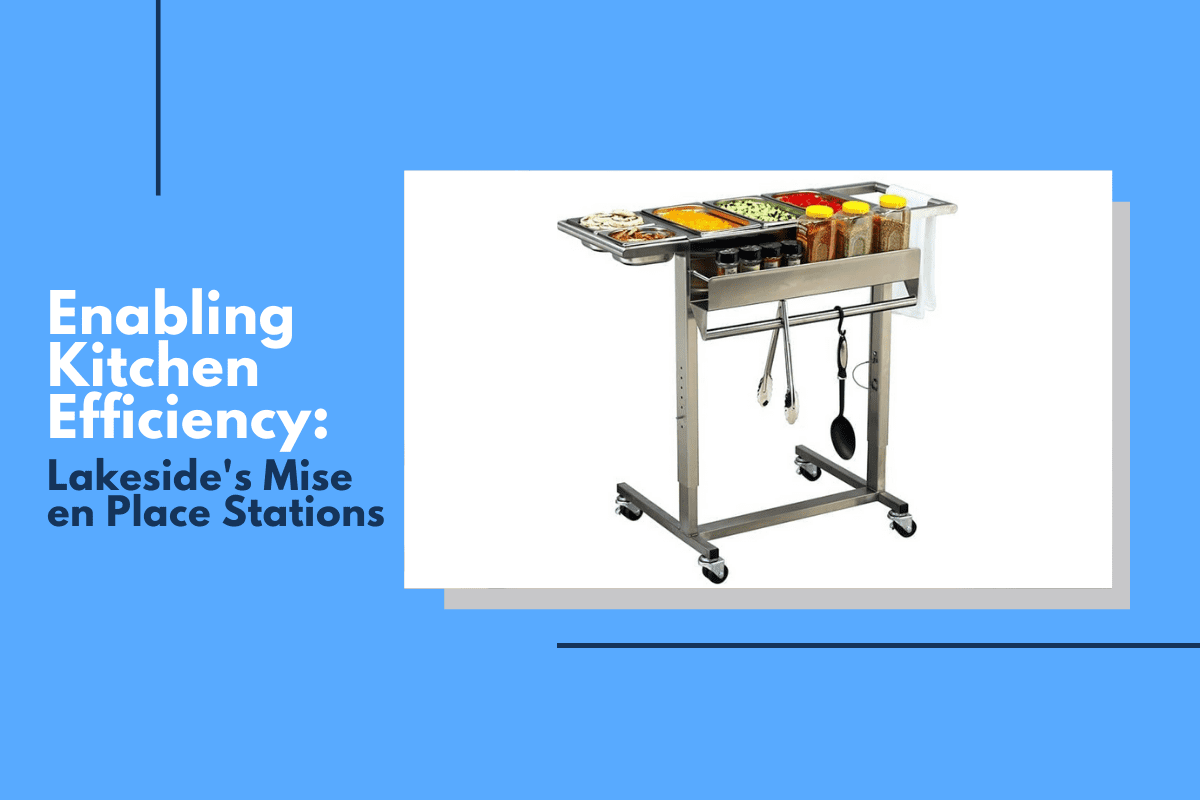
As you look at the organization of your commercial kitchen, you likely have mise en place front of mind.
This French term for “to put things in place” is a method that helps chefs prepare ingredients and organize equipment in anticipation of a busy service.
In order to execute an effective mise en place strategy, it is important to have the right equipment. With over 70 years of experience, Lakeside offers a diverse product line. This product line, along with collaboration with end-users and foodservice consultants, allows Lakeside to provide its customers with the equipment they need. Lakeside offers three mise en place solutions to help set your kitchen up for success.
Read on to learn more about how our mise en place stations can help optimize your kitchen’s efficiencies.
Lakeside Mise En Place Carts
Lakeside’s three mise en place stations offer a number of great features. Each model includes a stainless steel top frame built to hold a full-size pan. It can also accommodate smaller pans with standard inserts or a cutting board.
The cart has integrated handles on both sides, allowing it to hold a 1/3 pan or two 1/6 pans. A detachable speed rail with an integrated towel bar allows you to use the carts to arrange and hold the ingredients for your mise en place, including spices, seasonings, bottles, and sauces.
All models are ADA compliant so can be used by any member of your staff.
Model 140
This model can be moved and adjusted as needed for your space. It includes a cantilevered H-base with four small casters that are all-swivel with brakes. This enables the cart to roll under ranges for optimal use and storage options. Adding to its versatility, Model 140 is 21×38 inches but has an adjustable-height top, so it to be modified to suit your needs.
Model 146
This mise en place cart is Lakeside’s classic model. It has an overall size of 17.5 x 38 x 35 inches and includes four 3.5 inch casters that swivel.
Model 145
If you are concerned about shipping costs and are confident in your assembly abilities, you can consider opting for Model 145. This offers the same, classic set-up as Model 146 but comes unassembled, reducing costs associated with shipping and storage. We know some people just like building things, so with our easy-to-follow instructions, it should be a sinch!
Benefits of Lakeside Carts
Each of the Lakeside mise en place carts assists you in providing menu innovation without compromising the existing kitchen layout. Efficient layout will allow the chefs in your commercial kitchen to organize ingredients and equipment in a way that makes the most sense for their process. The carts are also versatile, perfect for tableside meal prep and customization.
Lakeside mise en place carts will enable chef and staff in commercial kitchens to:
- Organize cooking equipment and utensils;
- Peel, wash, chop, or dice vegetables;
- Trim and portion meat;
- Prepare fish fillets; and
- Keep spices close at hand
The above are just suggestions. The beauty of Lakeside mise en place carts is that how they are used can be unique to each member of the kitchen staff. In addition to organization, mise en place carts also promote menu planning, inventory management, and kitchen cleanliness.
Contact Lakeside Today
Whether you know exactly which mise en place carts are right for your kitchen or you need help strategizing the best fit, Lakeside is here to help. If you don’t see exactly what you need, we are happy to work with you to develop exactly what you need by modifying a standard product or specially designing a product for your unique application
Contact Lakeside today to begin your journey to a more organized kitchen.

